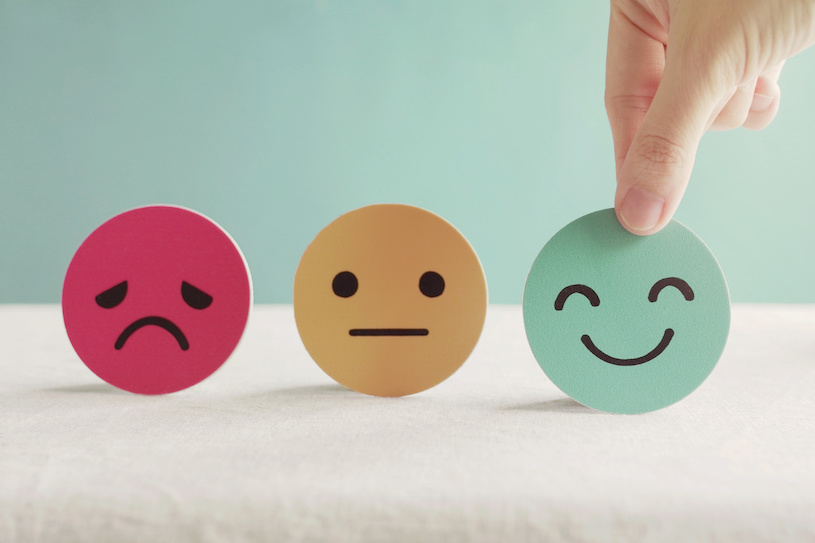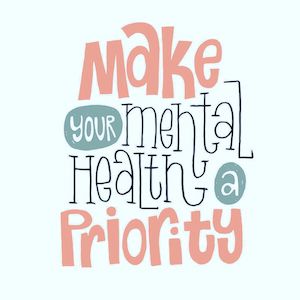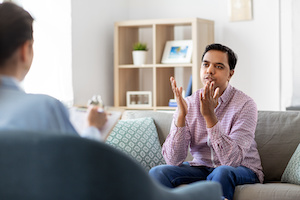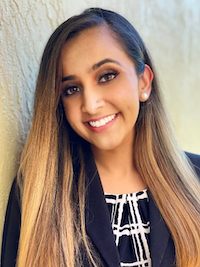Understanding Mental Health in Our Community

Did you know that ONE in every FIVE Indians may suffer from depression? The World Economic Forum reported a study conducted in 2015 by the World Health Organization that found one in every five Indians likely struggles with depression throughout the course of their life. That is 20% of the population, out of which only 10-12% seek out support. Given the current population, that would mean that even though one in five Indians are suffering, only one in fifty seek out help. That’s 2% of the population – 2% of 1.36 billion. So, why is there such a discrepancy between the number of Indians that experience mental health issues and the number that actually receive support or treatment? The culprit is the stigma South Asians have towards mental illnesses and the importance of taking care of our mental health.
This month is National Mental Health Awareness Month, which is dedicated to celebrating the importance of mental health and wellness of members in our society, an awareness that has been acknowledged in the United States since 1949. Mental Health Awareness Month not only focuses on commemorating those in recovery from mental illnesses, but it also raises awareness of possible traumas and the effects of them on the physical and mental well-being of the members of our community.

Mental Health Awareness in South Asians
Being one of the fastest growing ethnic groups in America, amongst the Asian American communities, our South Asian community is also one of the largest. Our community consists of a variety of different languages, religions, and cultures that make for an incredibly rich and multifaceted population.
Growing up Indian, one is able to see how we are an integrative country with deep cultural roots tying back to ancient times. Historically, India has made an immense number of contributions to society and is actively still doing so. Albert Einstein once said, “We owe a lot to the Indians, who taught us how to count, without which no worthwhile scientific discovery could have been made.” Ancient India has helped lay the foundation for modern day science and technology with many groundbreaking contributions.
 One would think that a country filled with such brilliant individuals would be able to recognize the significance of a variety of important topics. While this could be true, there seems to be a lack of initiative to raise awareness to one of the most essential topics, related to our health, to which our collective attention should be drawn. This is something that we must protect and something that affects us at every stage of our life. What is that? The importance of taking care of our mental health and recognizing mental health disorders.
One would think that a country filled with such brilliant individuals would be able to recognize the significance of a variety of important topics. While this could be true, there seems to be a lack of initiative to raise awareness to one of the most essential topics, related to our health, to which our collective attention should be drawn. This is something that we must protect and something that affects us at every stage of our life. What is that? The importance of taking care of our mental health and recognizing mental health disorders.
In comparison to other groups, South Asian communities are under-educated about mental health and mental illnesses, as well as preventive care and treatments for both. Instead of being able to receive help for mental health related issues, our communities are disregarding and diminishing its importance because of the stigma. South Asians view mental health disorders as taboo and oftentimes believe that seeking help for them is a sign of weakness.
 Over the years, friends and I have seen harsh judgements being passed about things that have completely been out of an individual’s control. Members of our Indian community have said things like “Oh, that man has been so lazy his whole life,” “Why does she cry so much? She is so weak,” or “She is crazy. One minute she is excited and happy and the next she is sad? There is no explanation other than she must be pagal.” All of these comments filled with judgement have actually happened in real life and guess what? After many years that “lazy man” was diagnosed with major depressive disorder. The girl who cried so much, well, she experiences a lot of anxiety on a daily basis. The woman who was called “crazy” and “pagal,” she ends up being diagnosed with bipolar disorder. In some cases, these realizations were followed by comments like “See, therapy is for crazy people,” and “Sick people go to therapy.” Not only does calling someone “crazy” perpetuate a stigma, the statements are inaccurate, and they dissuade individuals from treatment. Since poor mental health does not always equal mental illness, these comments can discourage others, who aren’t diagnosed with a mental illness but are trying to take care of their mental health, from seeking help as well.
Over the years, friends and I have seen harsh judgements being passed about things that have completely been out of an individual’s control. Members of our Indian community have said things like “Oh, that man has been so lazy his whole life,” “Why does she cry so much? She is so weak,” or “She is crazy. One minute she is excited and happy and the next she is sad? There is no explanation other than she must be pagal.” All of these comments filled with judgement have actually happened in real life and guess what? After many years that “lazy man” was diagnosed with major depressive disorder. The girl who cried so much, well, she experiences a lot of anxiety on a daily basis. The woman who was called “crazy” and “pagal,” she ends up being diagnosed with bipolar disorder. In some cases, these realizations were followed by comments like “See, therapy is for crazy people,” and “Sick people go to therapy.” Not only does calling someone “crazy” perpetuate a stigma, the statements are inaccurate, and they dissuade individuals from treatment. Since poor mental health does not always equal mental illness, these comments can discourage others, who aren’t diagnosed with a mental illness but are trying to take care of their mental health, from seeking help as well.
 The intolerant way in which many of us have been thinking has proved to become a major obstacle for those in need of our compassion and support. Partaking, or even seeing, these false judgements being made, strengthen the stigma we face. The thought of “Log kya kahenge?” (What will people think?) constantly runs through our minds. Many South Asian households attempt to either disregard or hide problems related to mental health for fear of judgement from family and community members.
The intolerant way in which many of us have been thinking has proved to become a major obstacle for those in need of our compassion and support. Partaking, or even seeing, these false judgements being made, strengthen the stigma we face. The thought of “Log kya kahenge?” (What will people think?) constantly runs through our minds. Many South Asian households attempt to either disregard or hide problems related to mental health for fear of judgement from family and community members.
The way in which our society labels and then shames individuals with mental illnesses is appalling to say the least. Individuals who need help regarding a mental illness or taking care of their mental health face an overwhelming amount of judgement that creates a massive roadblock for them to get the critical treatment they need. If you don’t think you need to take care of your mental health, why are you preventing others from receiving the help? Why are we being so critical? What good is it to judge someone for something they have no control over? It’s not to say that all of us agree with these negative views or fall into this way of thinking. It’s important to identify that there are some who thoroughly understand and are taking action and there are some who understand at a grassroots level. Unfortunately, this is not enough.
According to the American Psychological Association, based on national suicide rates from 2007, the second leading cause of death in Asian Americans ranging from 15-34 years of age, is suicide. A study supported by the National Asian Women’s Health Organization (NAWHO) reported that due to culture, Asian American women do not speak up even after they have seen depression amongst members in their family. From 2008 to 2018, the rate of mental illnesses nearly doubled in the Asian Americans and Pacific Islanders community (AAPI).
In spite of these startling facts, many of us still focus on what others may think and, therefore, shame mental illnesses and the idea of seeking help from a professional. One would go to a cardiologist for a heart problem, a dentist for teeth related issues, and a physical therapist to help reduce pain and improve mobility after an injury. We even go to a mechanic for maintenance and preventive care for our cars. Why not preventive care for ourselves? Why not a mental health professional for mental health related issues? Our mental health has an impact on how we think, behave, feel, handle stress, and connect with others. If one consistently neglects it, this could lead to other health complications such as high blood pressure, obesity, heart disease, and an overall weakened immune system. For this reason, it is vital for us to protect our mental health as it has the potential to negatively influence major areas in our lives if not properly cared for. Our mental and physical health are both instrumental parts of our wellbeing and should be treated with equal importance.
 It is remarkable and alarming to see the silence surrounding such an imperative topic in our Indian community. There are also numerous studies regarding mental health issues in South Asian immigrants that have found that we experience higher rates of mental health related issues than other demographics. It is likely that immigrants may be predisposed to experiencing psychological distress due to various factors related to immigration and their need to assimilate into a drastically different culture while combating the stress of providing for their families. According to the National Alliance on Mental Illness (NAMI), children born in the United States to immigrant parents have even higher rates of mental illness than their parents. The generational gap and integration of two disparate cultures may pose as a barrier for communication between immigrants and their children.
It is remarkable and alarming to see the silence surrounding such an imperative topic in our Indian community. There are also numerous studies regarding mental health issues in South Asian immigrants that have found that we experience higher rates of mental health related issues than other demographics. It is likely that immigrants may be predisposed to experiencing psychological distress due to various factors related to immigration and their need to assimilate into a drastically different culture while combating the stress of providing for their families. According to the National Alliance on Mental Illness (NAMI), children born in the United States to immigrant parents have even higher rates of mental illness than their parents. The generational gap and integration of two disparate cultures may pose as a barrier for communication between immigrants and their children.
Indians, along with most other South Asian groups, are typically known to prioritize the needs of their family over their own. We pride ourselves on having close-knit familial relationships, which is unarguably admirable and extremely important. At the same time, we need to make sure that we are open to understanding and communicating how each individual feels. Emotions must be discussed. What if your child has been experiencing stress? What if they are suffering?
South Asian children who are born and raised in America are raised in a conservative, collectivist culture at home while they are simultaneously exposed to an individualistic culture in other areas of life. The integration of two cultures, the generational gap and a lack of communication with parents creates a lot of opportunity for confusion and can lead to struggles with developmental issues. This is a pressing, yet an all too common, issue for American-born South Asian children. These children may be experiencing guilt or stress due to wanting to move towards a more western way of life while still upholding the traditional aspects that are expected from their families.
Resources
A common misconception is that individuals think that they have to have a mental illness in order to get help. We should not view seeing a professional as shameful, but rather as an admirable act as it is about taking care of yourself and being healthy. These processes are not about admitting defeat, but about learning and growing. We just need to focus on opening our minds to seeing the idea of therapy and counseling as something for our growth and development.
When finding a mental health professional, it is imperative to understand that it is normal to see multiple professionals until you have found the one that you are most comfortable with. Please, don’t be discouraged if it does not work out with the first professional you see. There are different types of professionals (psychiatrists, counselors, therapists) and correspondingly, there are also different types of therapy (cognitive behavioral therapy, emotionally focused therapy, etc). It is strongly encouraged that you conduct some research to find the professional who is an expert for your particular issue. As South Asians, we may benefit from seeing a South Asian therapist or counselor or we can see someone who has experience working with multicultural backgrounds so that they are better equipped to understand our needs.
Our world is rapidly evolving and is accompanied by the substantial growth in the number of technological advances we have made. If you are struggling with a mental health illness and cannot afford or don’t have access to receiving psychotherapy or psychological counseling-although strongly recommended – please don’t lose hope. In this case, it is evident that the technological advances in our society have reaped many benefits. There is a plethora of resources that we have access to anytime, anywhere, and in most cases, at no cost to you. The internet is filled with different advantageous tools of which we just need to be aware.
How to find these? Honestly, it’s as simple as searching “online emotional support” or “online mental health support.” The good news is there are a wide range of websites, many of which have substantial resources and information that are available to users for FREE.
There are confidential and informative helplines such as the National Suicide Prevention Lifeline, Crisis Text Line, and Substance Abuse and Mental Health Services Administration’s (SAMHSA’s) National Helpline that offer resources regarding mental health and substance use disorder, in addition to a referral service.
There are non-profit organizations that have recently been created in order to advocate for mental health awareness or provide additional resources catering to our South Asian community. SASMHA (South Asian Sexual and Mental Health Alliance), SAMHIN (South Asian Mental Health Initiative and Network) and Dil to Dil are a couple that have been brought to attention. Again, all of these organizations are just a few search words away making them easily accessible.
What should we do?
As South Asians, we are proud to be a part of a close-knit community. Let’s continue to uphold that unity and use it to uplift one another in matters related to mental health. Let us move forward with a will to be open minded. Let us be willing to change, educate one another, and fight to break the barrier for South Asians and the stigma associated with mental health.
 About the Author
About the Author
Shivani Janaki Patel is an advocate for mental health in the South Asian community. She graduated from the University of Central Florida with her Bachelor of Science degree in Psychology and a minor in Medical Sociology. She is pursuing both a Master’s degree and an Education Specialist degree in Marriage and Family Counseling at the University of Florida, and plans to become a dual licensed Marriage and Family Counselor and Mental Health Counselor. Additionally, she aims to become an adjunct professor of psychology, start a nonprofit with the mission of raising awareness for mental health in the South Asian community, and connect with like-minded individuals through her podcast Students of The Game.























